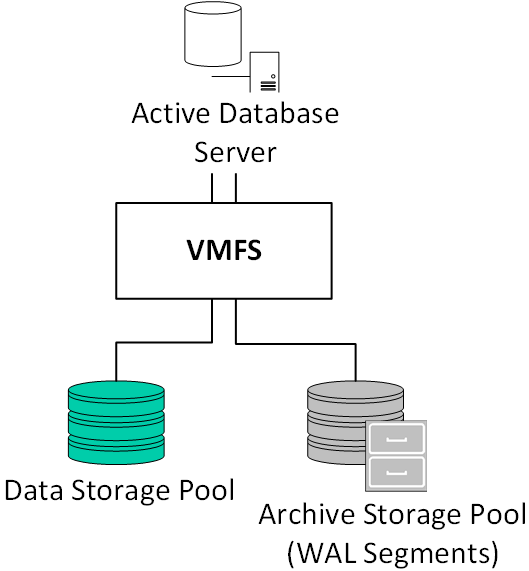Using PostgreSQL Continuous Archiving
CTERA Portal uses PostgreSQL's built-in continuous archiving mechanism, known as Point-In-Time Recovery (PITR).
After backing up the database for the first time, the base backup, Incremental backups of the database are performed using Write Ahead Log (WAL) files, which include all the database transactions and changes. Running a base backup and incremental backups is non-disruptive: the database continues running, without losing any data.
The following diagram illustrates continuous archiving and point-in-time recovery:

Using WAL logs has the following major benefits:
Note: The CTERA Portal database WAL files are located in $pgdatadir/pg_wal, which is commonly called the WAL directory.
The WAL file size is 16MB. Once a WAL file reaches 16MB, a new WAL file is created.
The maximum number of WAL files stored in the WAL directory is 128. This means that the WAL directory size can reach 16 (MB) * 128 (files) = 2GB.
When the 128-file threshold is reached, WAL files are recycled.
The database base backup and WAL logs are compressed upon backup:
Configuring PostgreSQL Continuous Archiving
To configure PostgreSQL continuous archiving:
1 Using SSH, log in as root to your CTERA Portal server.
2 In the command line, enter the following command to create the database archive pool: ctera-storage-util.sh create_db_archive_pool device
Where device is the name of the disk on which the database archive pool is created.
For example: ctera-storage-util.sh create_db_archive_pool sdd
Note: This command creates both a logical volume and an LVM volume group using the specified device. Multiple devices can be specified. For example:
ctera-storage-util.sh create_db_archive_pool sdd sde sdf
The logical volume size can be extended at a later time, as described in Extending the Database Archive Pool.
Note: When using NFS storage, use the following command to create the database archive pool: ctera-storage-util.sh create_db_archive_pool -nfs <NFS_IP>:/export/db_archive_dir
where NFS_IP is the IP address of the NFS mount point.
3 In the command line, enter the following command to configure the maximum number of days to keep the backups: ctera.sh configure-db-recovery backup-history-days
Where backup-history-days is the number of days you want to retain a base backup archive before a new one is created. For example, to retain an archive for seven days, run: ctera.sh configure-db-recovery 7
An initial base backup of the database is created and the next backup is scheduled based on the backup-history-days parameter. Starting from the second base backup, the first scheduled base backup, there is always two base backups in the archive storage pool. WAL files are created after the first base backup. When a scheduled base backup is performed, the new base backup replaces both the old base backup that exceeded the backup-history-days, as well as the WAL files created in the period of time between the old base backup and the new base backup.
Warning: The minimum retention period recommended by CTERA is 7 days. If you set the retention period to less than 7 days, you must also have a secondary backup method in order to protect the portal from disasters.
When the command finishes successfully a message is displayed, similar to the following:
NOTICE: pg_stop_backup complete, all required WAL segments have been archived
Done
You can roll back to any older version of the database up until the previous base backup.